How does Archeology relate to the Bible?
We have been using the acronym MAPS-S in making our “case for the Bible” (M=Manuscript evidence, A=Archeological evidence, P=Evidence from Prophecy fulfillment, S=Science authenticity, and -S=Evidence from Saved Lives over the centuries). Last week we concluded the M for Manuscript evidence which took weeks to cover and we only touch the surface. This week we will begin to look at the A for Archeological evidence.
Archeology is a relatively new science that did not take root until the nineteenth century AD, and prior to that time archeology was mainly done by grave robbers! It is amazing to learn how these relatively new discoveries from archeological digs in the Middle East consistently support the ancient Biblical accounts. Could it be that if the Bible is accurate in its historical record of people, places and events it might also be accurate on its other claims?
Archeology gives us one more piece in our growing list of evidence for the Bible. Along with the mounds of evidence we’ve covered in this series so far, that includes both internal and external sources, archeology gives us additional confidence that what we are reading in the Bible is reliable and based on facts we can trust.
Some facts about Archeology and the Bible:
- Archeology uncovers physical evidence from dig sites that help confirm Ancient cities, fortresses and artifacts like coinage, pottery and sculptures that directly or indirectly give support to both Old and New Testament narratives.
- Since the Bible includes historical accounts many scholars and archeologist have used the Bible to pinpoint events, times, people and places in both secular and Biblical history.
- To date there have been over 25,000 archeological discoveries that support a variety of Biblical accounts, both Old and New Testaments, and no valid archeological find (zero) has ever contradicted a Biblical account.
According to Dr. Walter Kaiser, Jr., Old Testament Scholar and Author, Archeology helps us to…
- Discover background support that confirms Biblical accounts
- Anchor the foundations of recorded Biblical events in the reality of the times and cultures they were written in
- Increase our confidence in God’s revelation when the truth of Scripture is tied to real historical events
Other Scholars have said:
“As a matter of fact, however, it may be stated categorically that no archaeological discovery has ever controverted a biblical reference. Scores of archaeological findings have been made which confirm in clear outline or exact detail historical statements in the Bible”
-Nelson Glueck, Archeologist, “Rivers in the Desert,” 31
“The geography of Bible lands and visible remains of antiquity were gradually recorded until today more than 25,000 sites within this region and dating to Old Testament times, in their broadest sense, have been located…”
-Donald J. Wiseman, “Archaeological Confirmation of the Old Testament,” in C.F.H. Henry, “Revelation and the Bible,” 301-302
Even secular news reports have said:
“In extraordinary ways, modern archaeology has affirmed the historical core of the Old and New Testaments—corroborating key portions of the stories of Israel’s patriarchs, the Exodus, the Davidic monarchy, and the life and times of Jesus.”
-Jeffery Sheler, “Is the Bible True,” US News & World Report, October 25, 1999, 52
Here are just a few examples of significant Old Testament era finds in archeology that have refuted long standing criticism from Biblical skeptics:
1. Skeptics have claimed that stories in the Old Testament are just myths since there are no outside records or corroborating evidence of, for example, places like Sodom and Gomorrah. But then…
- The most significant find in the twenty-first century is the discovery of the location of Sodom and the other ‘Cities of the Plain’ at the northern end of the Dead Sea. Dr. Steven Collins is the Director of the Tall El-Hamman Excavation Project that is currently conducting excavations at this site.
- Supports the historical existence for the Biblical record of Sodom, Gomorrah and the ‘Cities of the Plain.’
2. Skeptics have claimed there was no written language at the time of Moses, so Moses could not have written the Torah (the first five books of the Old Testament). But then…
- The Black Diorite Stele was discovered containing detailed laws of Hammurabi (Mesopotamian ruler c.1792-1750 B.C.) written 300 years before the time of Moses and in the same region that Moses lived. The Ebla Tablets were also found in 1970 in northern Syria and are dated about 1,000 years before Moses.
- Supports the use of written language at and before the time of Moses.
3. Skeptics have claimed it was impossible for the walls of Jericho to have fallen the way it is reported in the Bible, and during the timeframe of the Biblical account.
- The Walls of Jericho have now been excavated where Joshua and the Israelites began the conquest of the Promised Land and the evidence shows an outward fall or collapse of the walls with dating to the time of Joshua.
- Supports the Biblical account of what happened in the book of Joshua (see chapter six).
Archeologist Dr. Randall Price confirms the Biblical account of Jericho in this short clip:
In addition, “Patterns of Evidence” is an excellent documentary that came out a couple of years ago and it addresses the long standing controversy in secular science concerning the dating of the Exodus and Jericho. Click into their website to view their ongoing work and check out the trailer at the link: Patterns of Evidence, the film, you can also purchase it on DVD and it is on YouTube for a small fee. It is worth the two hour view that includes commentary interviews at the end with Eric Metaxas, Anne Graham Lotz, and Dennis Prager!
4. Skeptics have claimed that King David was a mythological figure as there was no evidence outside the Bible for his existence. But then…
- In 1993 three stones were found in Northern Israel in the territory of Dan. The stones have the name ‘David, King of Israel’ and ‘the house of David’ inscribed on them. These stones have been dated to the same time period that the Bible records David’s life. A 1995 Time magazine article reported on this archeological find confirming the existence of David. Since then there have been other related finds including the apparent discovery of David’s Palace the gates to Goliath’s hometown, and other account related to the Philistines at the time of David and Solomon (click on the links to read more).
- Supports the Biblical account of King David.
5. Skeptics also claimed the stories of King David and his son Solomon’s building of Jerusalem and the Temple were myths since there was no evidence in that time period. But then…
- In November of 2010, the Associated Press reported that, “ancient fortifications recently excavated in Jerusalem date back 3,000 years to the time of King Solomon and support the Biblical narrative about that era. If the age of the wall is correct, then the finding is key as it would match the Bible’s account that the Hebrew Kings David and Solomon ruled from Jerusalem around that time.”
- Supports the Biblical account of Kings David and Solomon and the building of the City of Jerusalem and the Temple during that era.
Watch this 7 minute clip on the discovery of the City of David:
6. Skeptics have said the tunnels built by King Hezekiah, when Hezekiah and the nation of Judah withstood the Assyrian attack, never existed. But then…
- The tunnel was first described by Franciscus Quaresmiusin in AD 1625; it was later explored in AD 1838 by the American Biblical scholar Edward Robinson and in AD 1865 by Charles Warren, and you can walk through them today!
- Supports the Biblical account of Hezekiah and the tunnels he built.
Watch this short clip on Hezekiah’s tunnel to get background on the significance of this find:
Update: Recent archeological finds have now suggested that we have confirmation of both King Hezekiah and the prophet Isaiah with the discovery of both of their seals. Check out the article at “Patterns of Evidence: thinker update blog.”
7. Skeptics have said the events and writings of the prophet Daniel could not have happened during the period reported because they are too accurate and precise. But then…
- Archeologists found the East India Inscription that corresponds with the Daniel account of Nebuchadnezzar’s building during the time period in question.
- Supports the Biblical account that Daniel was an eyewitness to the Babylonian exile and lived in this time period making it impossible for his writings to be at a later date.
8. Skeptics have said Bible prophesies, especially the Isaiah prophesy that names Cyrus some 150 years before his birth, are so accurate and detailed that they must have been written years after the events occurred. But then…
- The Cyrus Cylinder was discovered in an 1879 excavation at Babylon (now in Iraq, then in the Ottoman Empire), by Hormuzd Rassam on behalf of the British Museum. It was written in Babylonian cuneiform on the orders of the Persian king Cyrus the Great after his conquest of Babylon in 539 BC. The book of Isaiah was written 739-681 BC yet contains specific prophecy about Cyrus and what he would do.
- The Cyrus Cylinder supports the Biblical account of the person, time and events of Cyrus. Cyrus was predicted by name in the Bible 150 years before his birth (Isaiah 44:28, 45:1) to be the ruler who would allow the Jews to return to Jerusalem and rebuild their temple after seventy years in Babylonian captivity, and it happened and is confirmed here!
9. Skeptics have said the Old Testament records could not be accurate and could not be written as early as purported. But then…
- Archeologists discovered a silver amulet that was found in one of a series of tombs on the south side of Jerusalem’s Hinnom Valley. The amulet is dated seventh century B.C. and has an abbreviated version of part of the book of Numbers.
- Confirms the existence of the Torah in very early Jewish history and it matches what we have in our Old Testament today!
10. Skeptics have said the whole of the Old Testament cannot possibly be the same as what we have today, and the Messianic prophecies they contain had to have been added centuries later because they are too precise, and the earliest manuscript copies we had date late at c. AD 900. But then…
- The most significant find of the twentieth century for the historicity and reliability of the Old Testament was the discovery of the Dead Sea Scrolls in 1947 and to date they have recovered about 931 scrolls.
- The Dead Sea Scrolls (DSS) are dated c. 250 BC to AD 100 and close a 1000 year gap from the previously held copies.
- The DSS confirm that what was used at Jesus’ time and before are the same as what we have in our possession today.
- The DSS are highly significant because they are dated prior to the time of Christ. This means that they not only support the accuracy and reliability of our Old Testament today, but they confirm the hundreds of predictive prophecy fulfilled in Jesus (that could not have been written after the fact).
- The most important find is the complete scroll of the book of Isaiah and the match is virtually identical to what we have today!
Watch this 9 minute clip on the Dead Sea Scrolls and Prophecy:
Also, watch this presentation on the top ten Old Testament discoveries (they include some different ones and some I presented) by Pastor Bryan Windle, “Digging for Truth, Episode 57:
In addition, check out this excellent article and chart listing 50 specific people from the Old Testament that have been confirmed through archeology at biblicalarcheology.org.“
For My thoughts are not your thoughts, Nor are your ways My ways,” declares the Lord. “For as the heavens are higher than the earth, So are My ways higher than your ways And My thoughts than your thoughts. “For as the rain and the snow come down from heaven, And do not return there without watering the earth And making it bear and sprout, And furnishing seed to the sower and bread to the eater; So will My word be which goes forth from My mouth; It will not return to Me empty, Without accomplishing what I desire, And without succeeding in the matter for which I sent it. –Isaiah 55:8-11
Reflection
- How does archeology help make a case for the reliability of the Bible?
- Is there a find from the Old Testament that you can memorize as an example to share, or is there another one you have read about not on this list? Write it out.
- PTRs: Prayer focus—The amazing truths of the Bible that happened so long ago, yet God has allowed us to confirm them.
Bible Study
Each week we do a Bible study to practice our Bible study skills. Read or re-read 2 Corinthians chapter 12, then answer the following questions:
- In 12:1-6 Paul is talking about himself when he says “I know a man.” What did Paul experience? Extra Credit: Do we know when Paul experienced this?
- What did Paul say about being given a “thorn in the flesh” and why? How did Paul handle this “thorn” (12:7-11)? Discuss: What do we do when we experience our own “thorns” and does Paul’s example help us?
- What is the sign of a “true apostle” (12:12)? Discuss: Do you think we still have these signs and wonders being performed today? If so, give examples.
- Paul continues his final defense in 12:12-18 and then gives a summary of why he had been defending himself in 12:19. What did he say?
- What was Paul worried about concerning the Corinthian Church upon his return to them (12:20-21)? Discuss: Do Church leaders still need to have that worry today?
Join us next week as we continue our “Case for the Bible” by looking New Testament evidence from Archeology!
——————————————————————————————
You will not find this material in the public school curriculum even though it is based on solid evidence and grounded in research. It is ironic that following the evidence to where it leads stops at the door of our public schools as they will not let a “Divine footprint” in! Join us as we examine evidence for Christianity and learn how to become a thoughtful defender and ambassador of your faith.
Click into the resource page of this website to view many of the top Christian thinkers and apologists along with some of their work; connecting to these types of resources is essential in your Christian growth.
Please let me know what you think: Give feedback, ask questions or send concerns in the comment section of the blog.
Teri Dugan
TeriDugan@truthfaithandreason.com
1 Peter 3:15

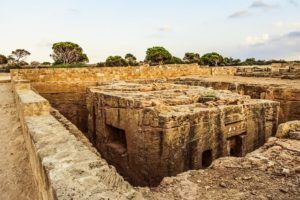
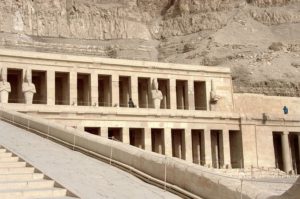
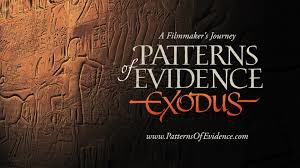
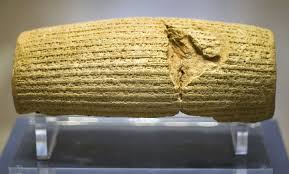
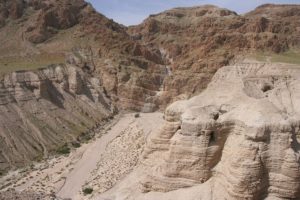


Sorry, comments are closed for this post.